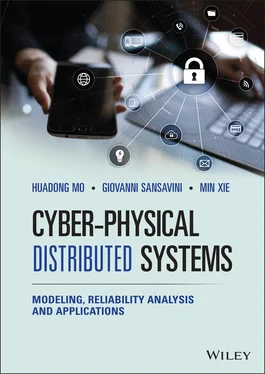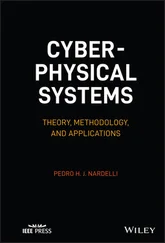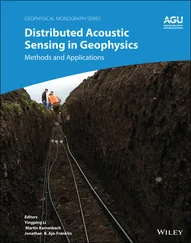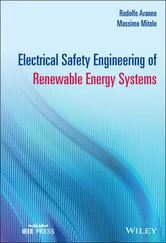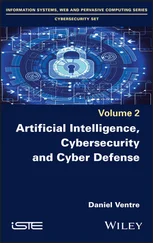Min Xie - Cyber-Physical Distributed Systems
Здесь есть возможность читать онлайн «Min Xie - Cyber-Physical Distributed Systems» — ознакомительный отрывок электронной книги совершенно бесплатно, а после прочтения отрывка купить полную версию. В некоторых случаях можно слушать аудио, скачать через торрент в формате fb2 и присутствует краткое содержание. Жанр: unrecognised, на английском языке. Описание произведения, (предисловие) а так же отзывы посетителей доступны на портале библиотеки ЛибКат.
- Название:Cyber-Physical Distributed Systems
- Автор:
- Жанр:
- Год:неизвестен
- ISBN:нет данных
- Рейтинг книги:3 / 5. Голосов: 1
-
Избранное:Добавить в избранное
- Отзывы:
-
Ваша оценка:
- 60
- 1
- 2
- 3
- 4
- 5
Cyber-Physical Distributed Systems: краткое содержание, описание и аннотация
Предлагаем к чтению аннотацию, описание, краткое содержание или предисловие (зависит от того, что написал сам автор книги «Cyber-Physical Distributed Systems»). Если вы не нашли необходимую информацию о книге — напишите в комментариях, мы постараемся отыскать её.
SYSTEMS
Gather detailed knowledge and insights into cyber-physical systems behaviors from a cutting-edge reference written by leading voices in the field Cyber-Physical Distributed Systems: Modeling, Reliability Analysis and Applications
Cyber-Physical Distributed Systems
Cyber-Physical Distributed Systems
Cyber-Physical Distributed Systems — читать онлайн ознакомительный отрывок
Ниже представлен текст книги, разбитый по страницам. Система сохранения места последней прочитанной страницы, позволяет с удобством читать онлайн бесплатно книгу «Cyber-Physical Distributed Systems», без необходимости каждый раз заново искать на чём Вы остановились. Поставьте закладку, и сможете в любой момент перейти на страницу, на которой закончили чтение.
Интервал:
Закладка:
Table of Contents
1 Cover
2 Title Page
3 Copyright Page
4 Preface
5 Acronyms and Abbreviations
6 1 Introduction 1.1 Challenges of Traditional Physical and Cyber Systems 1.2 Research Trends of CPSs 1.3 Opportunities for CPS Applications
7 2 Fundamentals of CPSs 2.1 Models for Exploring CPSs 2.2 Evaluation and Verification of CPSs 2.3 CPS Performance Improvement
8 3 Stability Enhancement of CPSs 3.1 Integration of Physical and Cyber Models 3.2 Settings of Stability Analysis 3.3 HMM‐Based Stability Improvement 3.4 Stability Enhancement of Illustrative WAPS
9 4 Reliability Analysis of CPSs 4.1 Conceptual DGSs 4.2 Mathematical Model of Degraded Network 4.3 Modeling and Simulation of DGSs 4.4 Reliability Estimation Via OPF 4.5 OPF of DGSs Against Unreliable Network
10 5 Maintenance of Aging CPSs 5.1 Data‐driven Degradation Model for CPSs 5.2 Maintenance Model and Cost Model 5.3 Applications to DGSs 5.4 Applications to Gas Turbine Plant
11 6 Game Theory Based CPS Protection Plan 6.1 Vulnerability Model for CPSs 6.2 Multi‐state Attack‐Defence Game 6.3 Attack Consequence and Optimal Defence 6.4 Applications to Distributed Generation Systems (DGSs) with Uncertain Cyber‐attacks
12 7 Bayesian Based Cyberteam Deployment 7.1 Poisson Distribution based Cyber‐attacks 7.2 Cost of MNB Model 7.3 Thompson‐Hedge Algorithm 7.4 Applications to Smart Grids 7.5 Performance of Thompson‐Hedge Algorithm
13 8 Recent Advances in CPS Modeling, Stability and Reliability 8.1 Modeling Techniques for CPS Components 8.2 Theoretical Stability Analysis 8.3 Game Model for CPSs
14 References
15 Index
16 End User License Agreement
List of Tables
1 Chapter 2 Table 2.1 Domain Requirements and Descriptions.Table 2.2 The parameters and the 95% confidence interval of the distribution ...
2 Chapter 3Table 3.1 Parameters of the single‐area WAPS with communication network.Table 3.2 Parameters of frequency response model in the Figure 3.3.Table 3.3 Parameters of communication network in Figure 3.5.Table 3.4 State of DERs under different microgrid operating conditions.Table 3.5 Statistical properties of MSE of delay predictions.Table 3.6 Statistical properties of aggregated indicator of the case 1.Table 3.7 Statistical properties of aggregated indicator of the case 2.Table 3.8 Reliability of the integrated system for different network configur...Table 3.9 Optimal PID controllers [ K P, K I, K D] for different network configur...
3 Chapter 4Table 4.1 Configurations of the communication networks types.Table 4.2 Technical characteristics different feeders.Table 4.3 Technical characteristics of the different power sources.Table 4.4 Simulation results of different cases under different demand levels...Table 4.5 CG, Actual Global Cost (AGC), ENS and RP for each scenario of the p...Table 4.6 EACG, EENS and ERP for the entire duration of the database.
4 Chapter 5Table 5.1 Technical details of generation plants.Table 5.2 O&M cost and fitting model by technology.Table 5.3 The indicators | Co | of the DGS over 12 scenarios on September 6, 20...Table 5.4 The estimated TCo and total ENS ( TENS ) of the DGS of 12 scenarios fr...Table 5.5 The predicted PBM features and MCR LC ( M, L, T I) as a function of M POTable 5.6 The optimal maintenance strategies [ M PO, T I] for different combinat...
5 Chapter 6Table 6.1 Settings for the Contest and the PSO.
6 Chapter 7Table 7.1 Regression results.Table 7.2 ANOVA results.
List of Illustrations
1 Chapter 2 Figure 2.1 The control block diagram of CPSs with degraded components. Figure 2.2 Simulink realization of the microgrid. (a) Ethernet, (b) Hybrid n... Figure 2.3 Sending time and receiving time for the (a) interference node, (b...Figure 2.4 Comparisons among the Wiener degradation model of (2.3) and linea...
2 Chapter 3Figure 3.1 Schematic of the single‐area WAPS with communication delays.Figure 3.2 An illustrative example for the time delays in C‐A channel.Figure 3.3 Schematic of illustrative physical.Figure 3.4 Real‐time curves of (a) wind speed, (b) solar irradiance and (b) ...Figure 3.5 Schematic of illustrative cyber layer.Figure 3.6 Control block diagram of illustrative integrated system.Figure 3.7 Schematic of DHMM: Observed time delays are generated by the unde...Figure 3.8 The illustrative WAPS with the DHMM‐based Smith predictor.Figure 3.9 The flowchart of the DHMM‐based Smith Predictor.Figure 3.10 The C‐A time delay observations derived from different quantizat...Figure 3.11 The prediction results for C‐A time delaysFigure 3.12 Most likely network states derived from the two different quanti...Figure 3.13 LFC performance of WAPS (a) without Smith predictor, (b) with Sm...Figure 3.14 Dynamic performance of single‐area LFC (PID controller) of WAPS ...Figure 3.15 Eigenvalue spectrum of the microgrid in the presence of time del...Figure 3.16 System frequency responses of (a) the PI controller with 20 ms t...Figure 3.17 System reliability as a function of the length of data traffic....Figure 3.18 System reliability as a function of the variable of the network ...Figure 3.19 Pareto optimal sets and tradeoff of the optimization objectives ...Figure 3.20 Evolution of (a) FESS, (b) BESS, (c) DEG, and (d) system frequen...Figure 3.21 Evolution of (a) FESS, (b) BESS, (c) DEG, and (d) system frequen...Figure 3.22 Evolution of (a) FESS, (b) BESS, (c) DEG, and (d) system frequen...Figure 3.23 Evolution of (a) FESS, (b) BESS, (c) DEG, and (d) system frequen...Figure 3.24 Evolution of the system frequency deviation under normal operati...
3 Chapter 4Figure 4.1 The conceptual diagram of DGSs with degraded communication networ...Figure 4.2 Simulation of degraded communication networks ‐ (a) delays and (b...Figure 4.3 Simulation of degraded communication networks ‐ (a) delays and (b...Figure 4.4 Different power profiles of (a) load, (b) MS, (c) PV and (d) WTG ...Figure 4.5 Different PCLPs for September 14, 2015.Figure 4.6 Comparison of (a) interpolated 5‐minute load data to actual load ...Figure 4.7 Comparison of (a) interpolated 5‐minute load data to actual load ...Figure 4.8 Comparison of (a) interpolated 5‐minute wind power data to actual...Figure 4.9 Comparison of (a) interpolated 5‐minute wind power data to actual...Figure 4.10 Simulation of (a) packet dropout and its impact on (b) load data...Figure 4.11 Flow chart of MCS‐OPF method.Figure 4.12 Radial 11‐nodes DGS.Figure 4.13 Load profiles of different nodes for August 23, 2015.
4 Chapter 5Figure 5.1 Control block diagram of the power system with four gas turbines ...Figure 5.2 The evolution of the maintenance variables of the PBM model, i.e....Figure 5.3 Scenario of the outputs of renewable energy resources, i.e., (a) ...Figure 5.4 (a) Efficiency reduction, (b) O&M cost (excluding fuel) and (c) o...Figure 5.5 The estimated PDF of (a) TENS Nand TENS D, and (b) TCo Nand TCo Du...Figure 5.6 The reductions in the two indicators caused by the aging process ...Figure 5.7 The evolution of the system frequency in two scenarios of differe...Figure 5.8 The LC ( M, L, T I) as a function of M POand T I.Figure 5.9 Comparison among the pre‐scheduled, the condition‐based and the p...
5 Chapter 6Figure 6.1 (a) Distributed gas generators connected to routers in order to r...Figure 6.2 Total expected damage cost as a function of the most probable att...Figure 6.3 Expected system unsupplied demand as a function of the most proba...Figure 6.4 Optimal redundancy‐allocation rate r * as a function of the most p...Figure 6.5 Changing curve of optimal number of attacked cyber component n .Figure 6.6 Simulation results of (a) total expected damage cost and (b) opti...Figure 6.7 Simulation results of (a) total expected damage cost, and optimal...Figure 6.8 Simulation results of (a) total expected damage cost, and optimal...
Читать дальшеИнтервал:
Закладка:
Похожие книги на «Cyber-Physical Distributed Systems»
Представляем Вашему вниманию похожие книги на «Cyber-Physical Distributed Systems» списком для выбора. Мы отобрали схожую по названию и смыслу литературу в надежде предоставить читателям больше вариантов отыскать новые, интересные, ещё непрочитанные произведения.
Обсуждение, отзывы о книге «Cyber-Physical Distributed Systems» и просто собственные мнения читателей. Оставьте ваши комментарии, напишите, что Вы думаете о произведении, его смысле или главных героях. Укажите что конкретно понравилось, а что нет, и почему Вы так считаете.
